Features
The Storyteller: Photojournalism Is Not Dead Say London’s Emerging Protest Photographers
By Ellen Clipson - 5 min read
In celebration of the launch of The Storyteller category for The EyeEm Awards 2021, we spoke to professional photographers and photojournalists Henri Calderon and Aiyush Pachnanda to find out what it really takes to create compelling photojournalism, street photography, and portraiture no matter what gear you’ve got or what your passion is.
True Stories Are Worth Fighting For Say London’s Emerging Photojournalists
Exactly a year after we first spoke to them about their coverage of Black Lives Matter protests, we restart the conversation with Henri and Aiyush about their experience. From capturing some of London’s most prominent protests to compelling travel projects in Greece and India, the two are proving that the right eye and an uncompromising commitment to visual storytelling is worth the fight.
Entries are open for The EyeEm Awards 2021. Winners of The Storyteller category will win incredible prizes, get exhibited, and published. Find out more and enter now.
Henri Calderon
Picking up his first camera at a young age, Henri is a multidisciplinary professional photojournalist and portraitist. Working on commissions for the likes Mercury Awards and Burberry alongside projects covering London’s most prominent protests, the Black Lives Matter movement, and the work of NGO’s operating in Greece’s Refugee Camps.
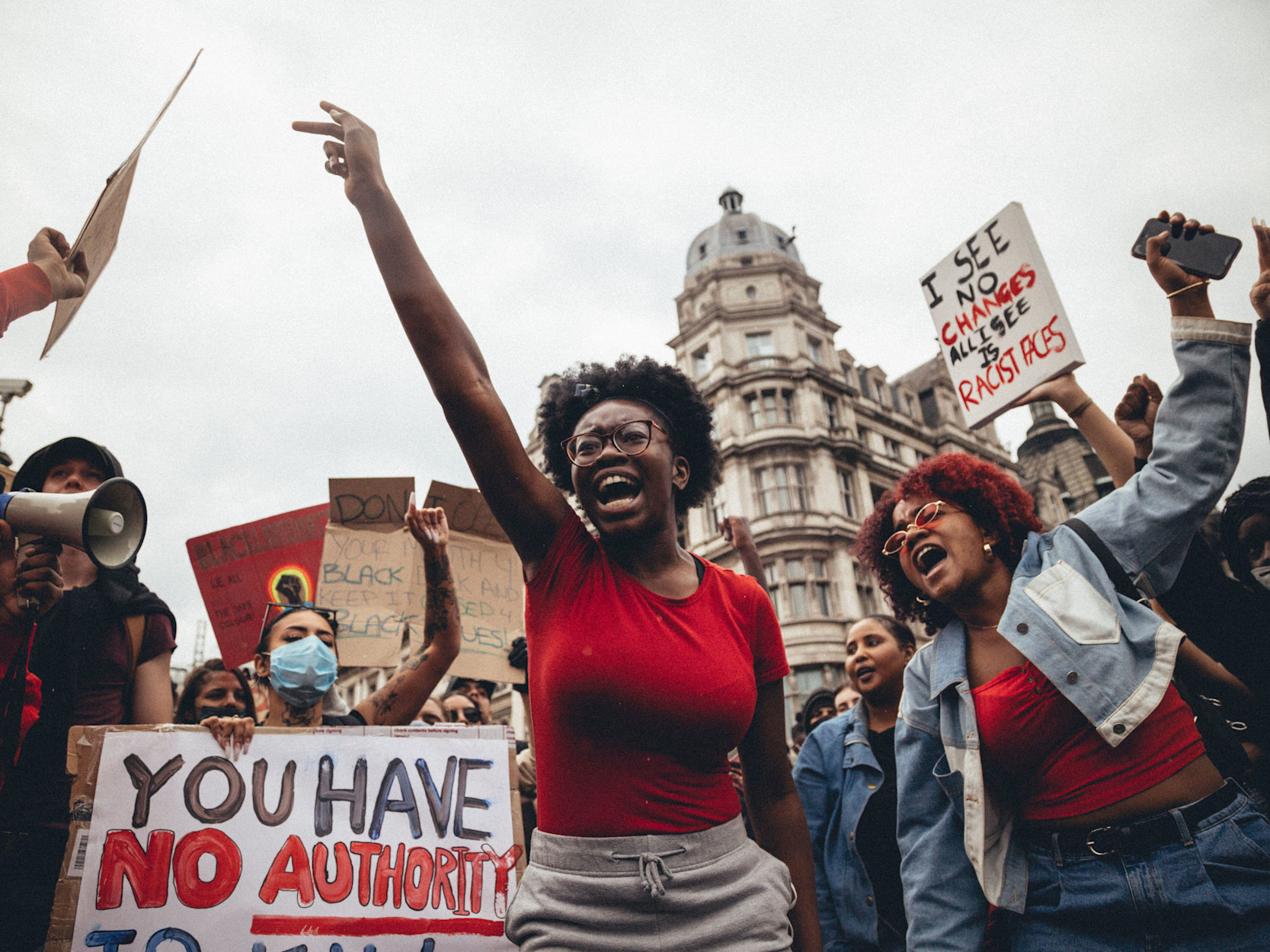
What have you been focusing on in the last year?
Looking back over the past year, photography has been really important for me when it comes to maintaining myself and my mental well being. As a freelancer, I lost a lot of my work during the first lockdown which meant that I needed to get another job. I then quit that and that was when Black Lives Matter emerged and I decided I was going to shoot, shoot, shoot. In a way that’s become my mantra this year–shoot as much as possible. 2020 has been a year of massive change and with those changes a lot of new opportunities have been born.
From being at a protest and in the middle of the action to shooting for something like the Mercury Prize which involves a more intimate portraiture shoot, can you tell us what it’s like switching contexts like that?
I really like switching between different situations. I absolutely love shooting protests because they are so dynamic and the amount of different things that are going on. It’s a really fast paced way of shooting which I became quite accustomed to because I was shooting events when at university and I was able to translate that into protest. But I feel like the true measure of a photographer is how they can apply their skills to a range of situations.
One of things I love about what I do is that I get to talk to people, and that’s not something you get to do as much at a protest. If you’ve got a more intimate portrait setting you can actually sit there and work out what makes the person tick and how can I best capture them.
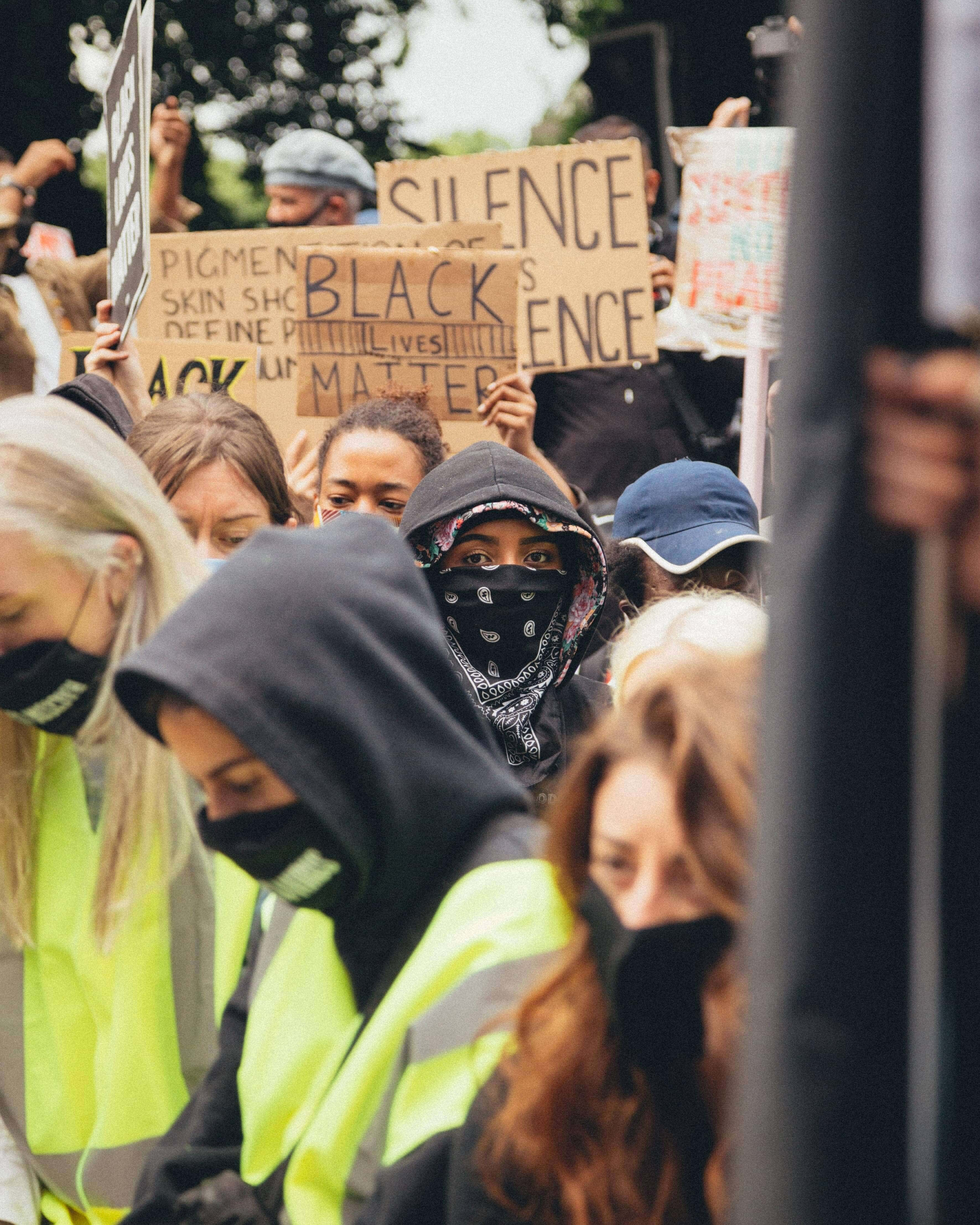
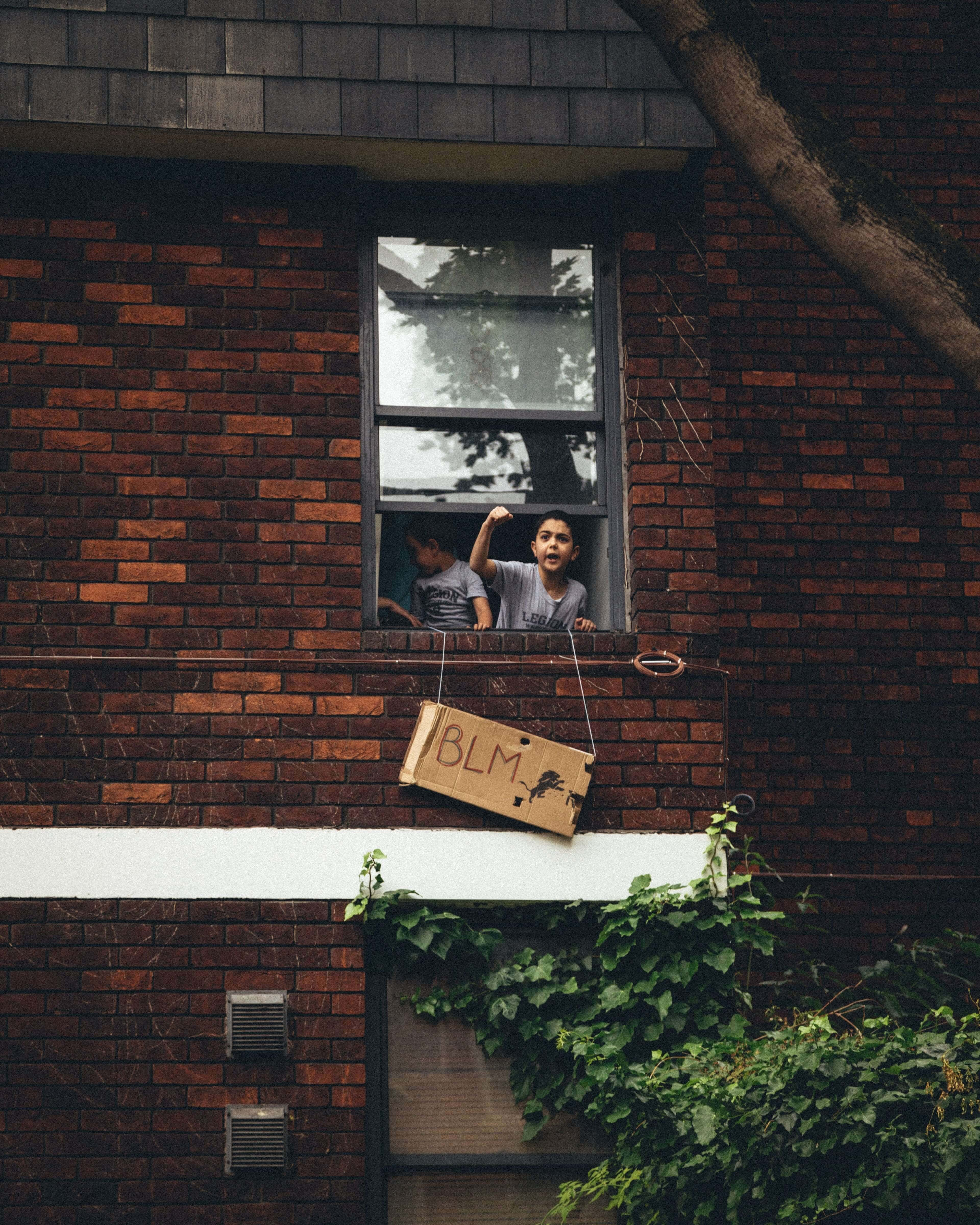
What’s your advice for finding the quieter moments when you’re shooting at a protest?
Keeping two eyes open. If you’re looking through your camera you’re not looking at what’s happening. I think it’s about being constantly aware of your surroundings. When shooting protests, something will happen and a bunch of photographers will run to it. That’s a really good way to shoot it and I’ll do that sometimes. But I decided when I wanted to shoot movements like Black Lives Matter and the Sara Everard protests that I didn’t want to come out with stuff that everyone else had. There’s no guide on how to find that originality–it’s personal to you.
There are thousands of things going on at each protest, and it depends on whether you’re willing to look for them. I really like the idea of peaceful moments in the chaos. It’s a nice juxtaposition that I think people like as well because it allows people to connect. That’s the magic of photojournalism. It’s about associating with someone that you’ve never met and know nothing about but are still able to feel what they’re doing.
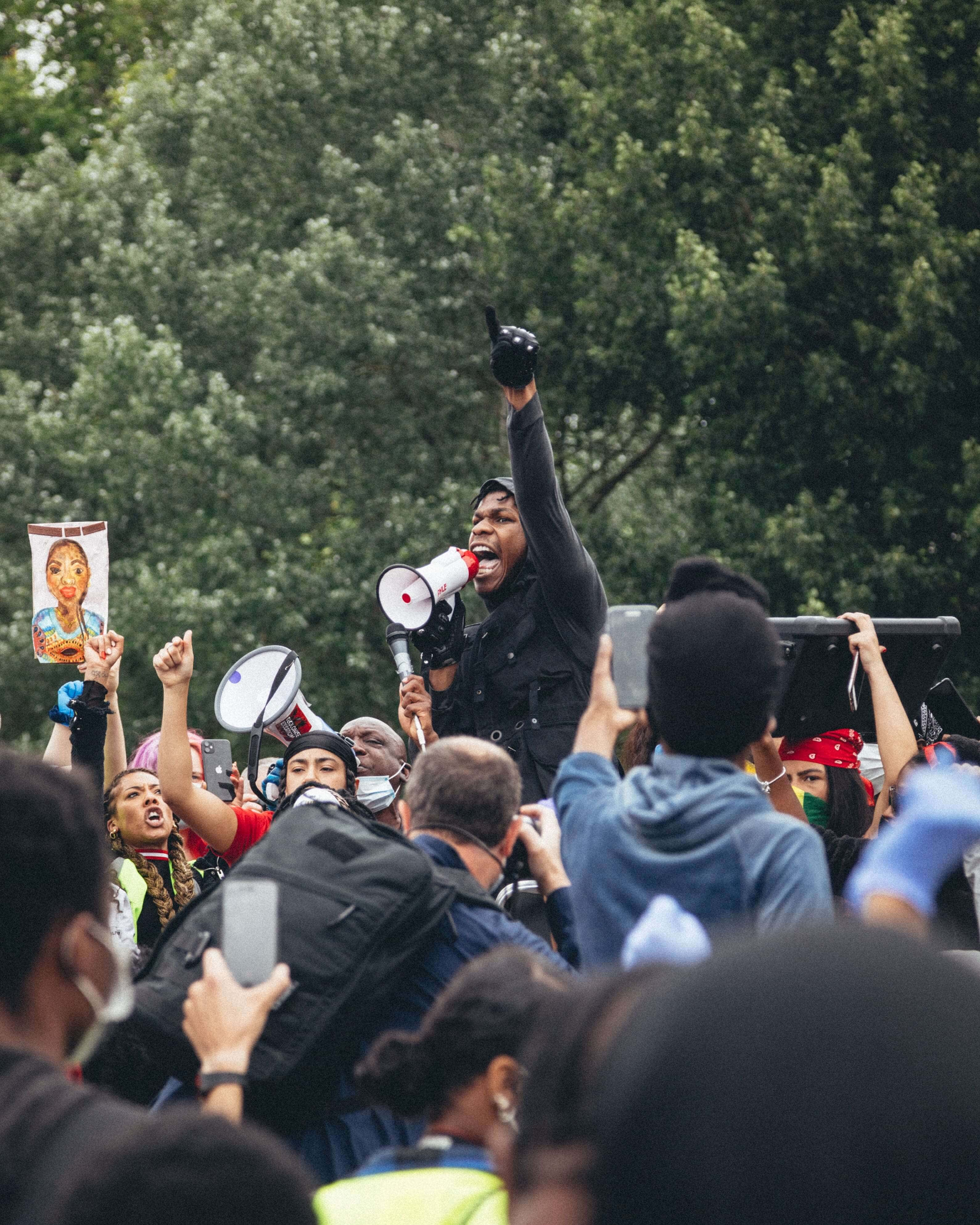
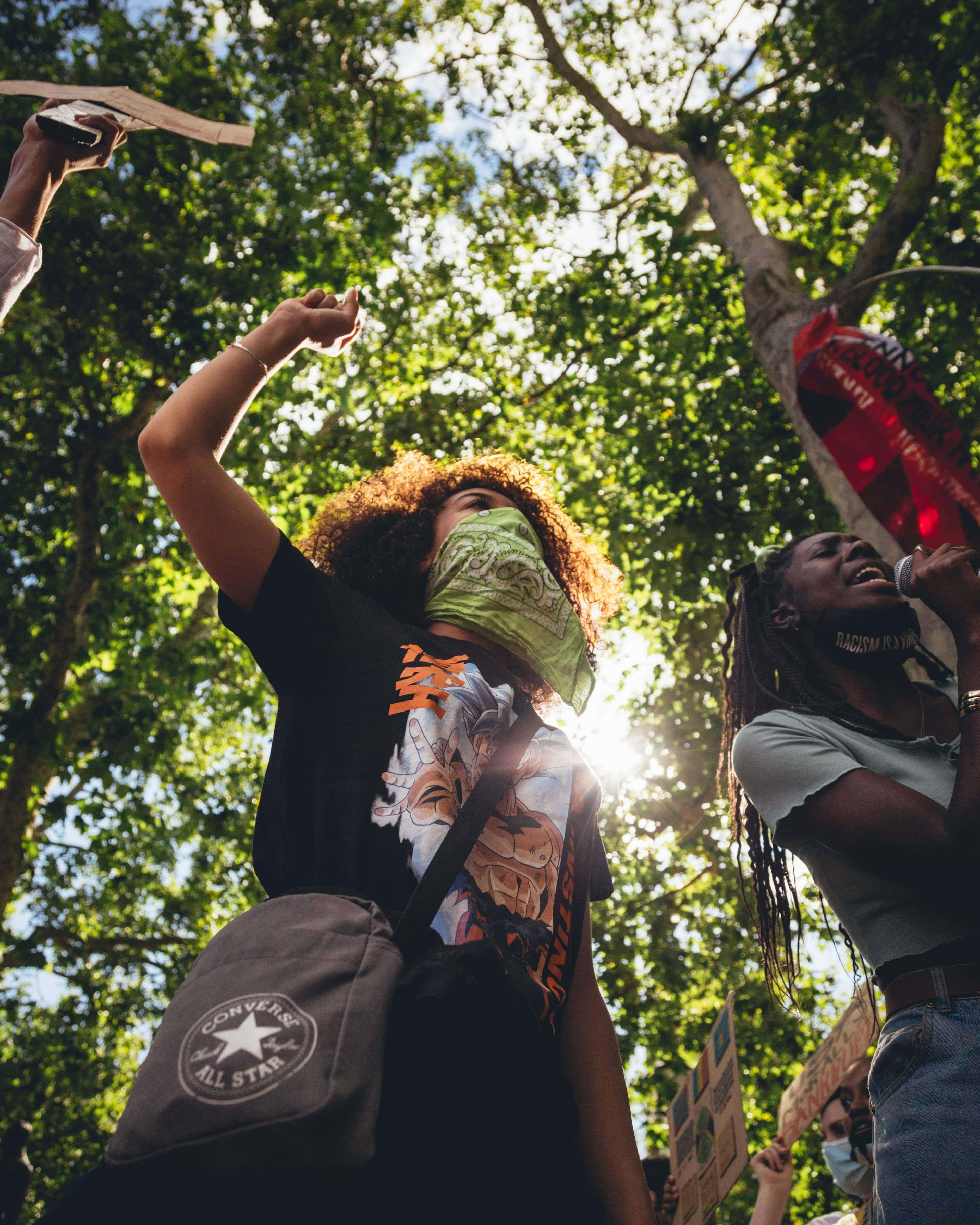
How do you decide which protests or demonstrations to cover?
It’s a good question that we don’t actually talk about. I guess the first thing is that I run a lot. Obviously you’re on your feet all day and your shins will be killing you if you’re not used to it.
Besides that, I tend to find out about a protest from social media and news. If I see something on BBC news I hop onto Twitter and do an advanced search. Then I watch it for a day or two and see how it develops, and from that you can gauge who is going to be there and why they are there. It’s about getting as much information as you can beforehand and then making the conscious decisions on what you want to shoot.
I think back to last summer where there was an LGBTQ+ slash Black Lives Matter protest and then there was another protest, which was like majority from Black Muslims, centrered aroudn the handling of a murder case for a young girl called Shukri Abdi. I felt that a lot of photojournalists would head to the LGBTQ+ protests and so that was going to get a lot of coverage. I’d rather step out and cover the alternative protest to be able to get the more challenging photos that don’t get brought up so much.
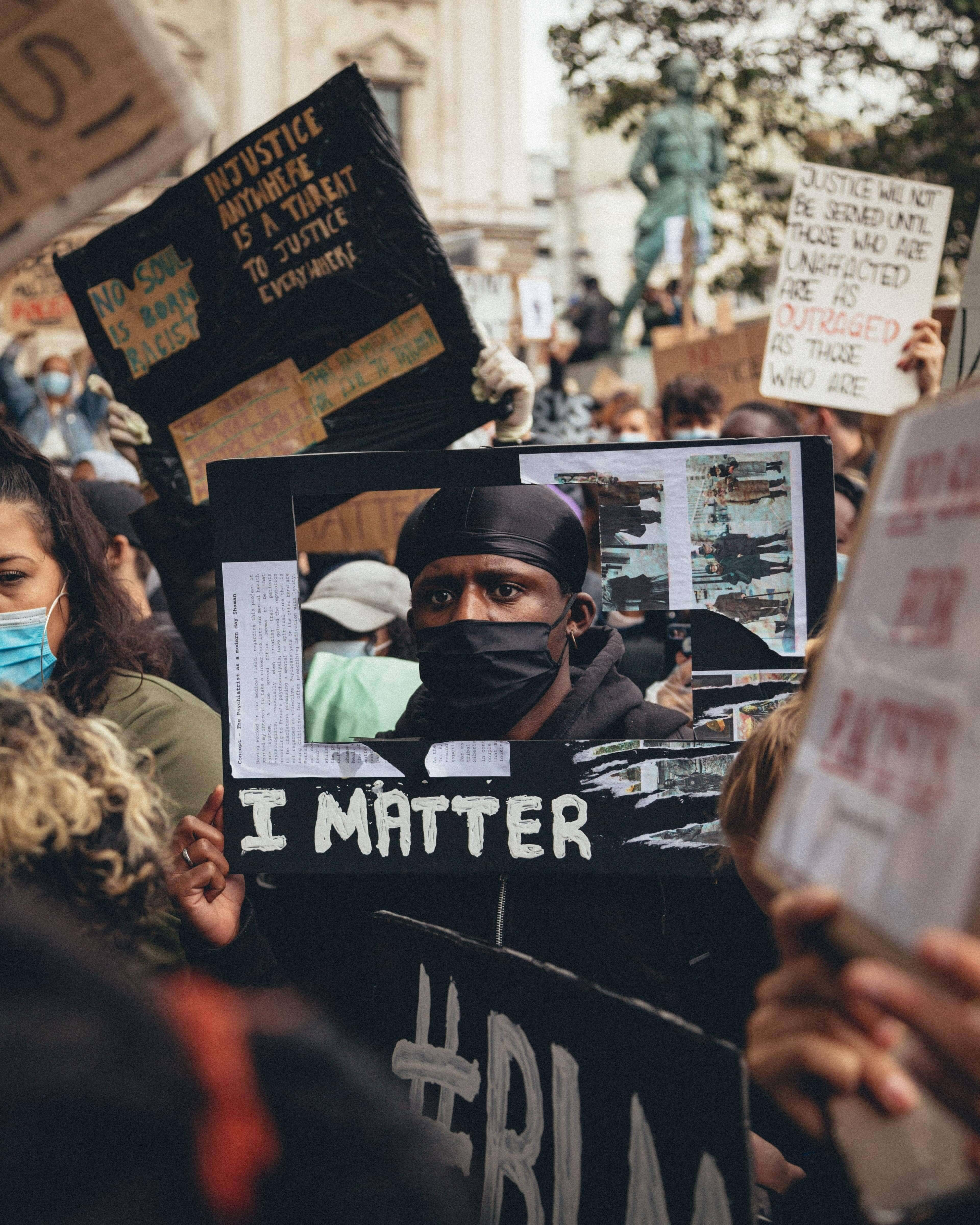
What gear do you tend to take to shoot with and why?
I have two cameras, I have my 5D which is my big DSLR and I have my Leica, which is my smaller DSLR. It depends on what I’m shooting but I feel that the camera that you choose is a conscious decision you have to make as they will breed a different reaction from the people that you shoot.
At the start of 2020 I went out to Greece for a project photographing some of the refugee camps. When I arrived I was not that experienced and I bought both cameras. The head of marketing of the NGO I was working with told me to shoot with my Leica and explained that people don’t like photographers with big DSLRs. When people tend to see a guy rock up with a big camera, with a fat battery bit, and a big flash on top, they assume you’re media or press and will turn away. But as my Leica looks like a film camera it is much less intimidating and gets you angles or certain access that you wouldn’t have otherwise got.
A core part of my principles is that I never want to interrupt something that is going on or be noticed in that way. So if we translate that to protests, this week I was shooting vigils in London for a person called Sasha Johnson. I decided to shoot on my Leica because I didn’t want to go into that space, which is very serious, with an imposing and attention grabbing camera. If I was shooting a protest of 20,000 people I can use my 5D because it’s fast to shoot, it’s a powerhouse, and if I drop it then it’s going to be alright. And so I think that is a really important conversation you need to have with yourself before you head into anything.
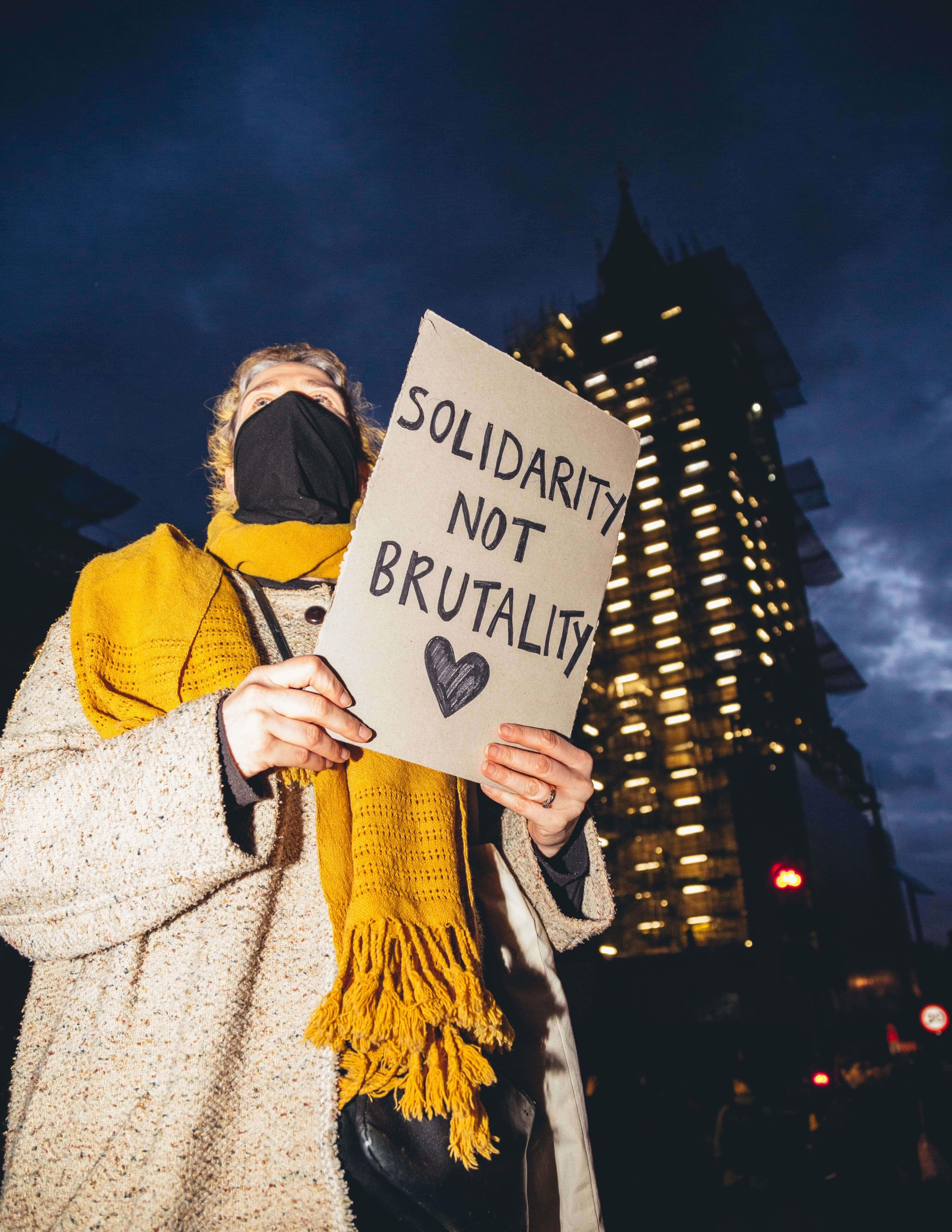
“It’s hard world for a photojournalist”
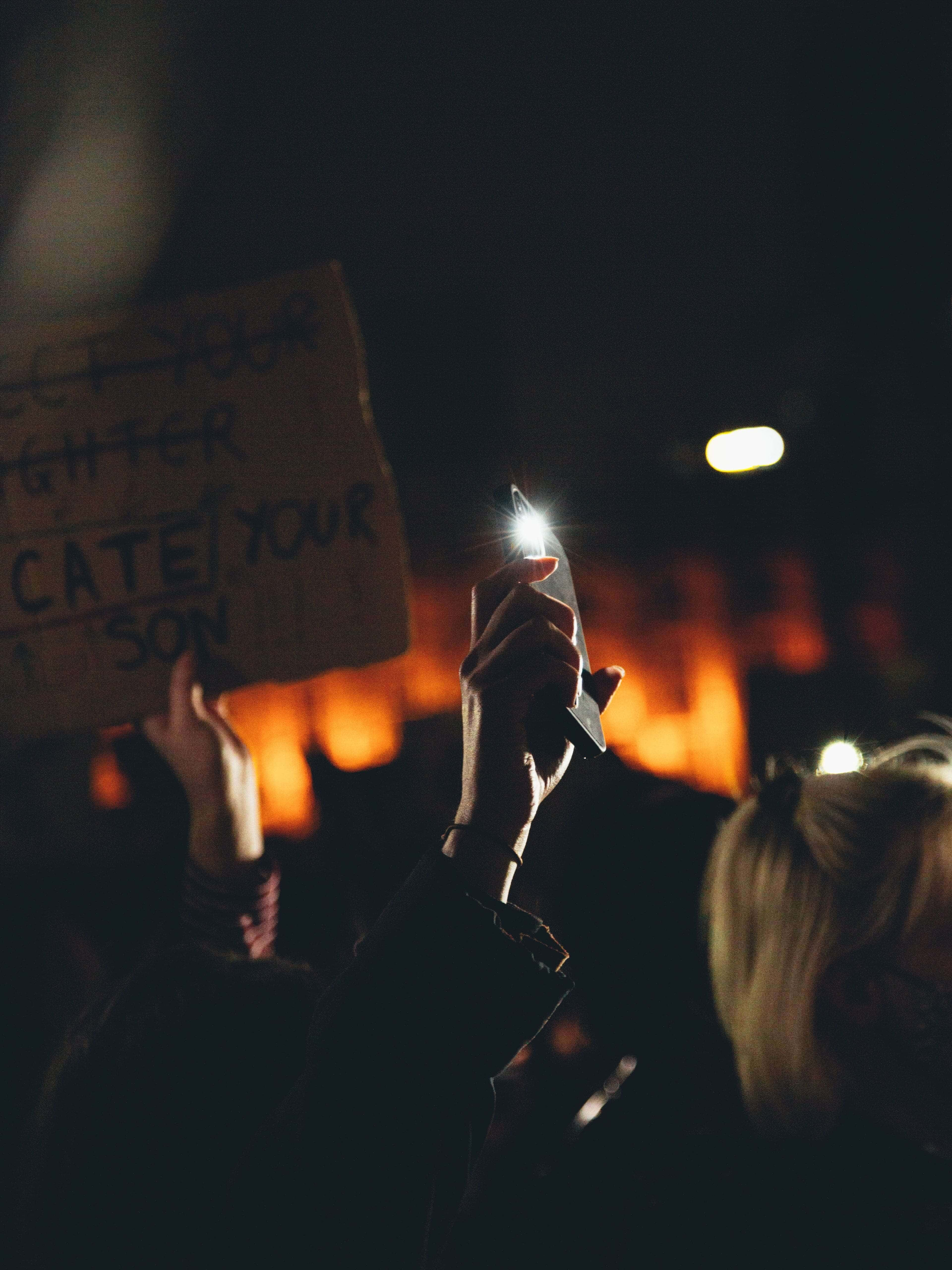
For this year’s awards we are introducing the ‘best mobile shot’ award. When it comes to the future of photojournalism, how do you see mobile photography affecting photojournalism
There are people who say photojournalism is dying. And the reason for that is the traditional ways by which a photo journalist would operate, in terms of magazines not going to print and commissions not being what they used to be, aren’t really there any more. From what I hear from the older photographers I chat to, it’s hard world for a photojournalist. But phone photography also adds a lot of new opportunities. The fact that nearly everyone has phones is great because it means the more people are taking pictures, and at the end of the day, more stories are being captured and people are being held accountable. I think that’s what a photojournalist does–they go out and try to tell the truth. In a way, it’s good for the general public as photojournalists will sometimes bring their bias and so in terms of the way that people get their visual information the smartphone era is great.
To be honest, I love shooting on my phone. Before I had my DSLR I would have the majority of stuff on my phone because it was the only camera I had. For me it wasn’t about the kit in those days, it was about going out and finding interesting things to photograph, and I think that’s really helped me in terms of becoming a photographer because not having all the means meant that I had to figure out how to make an interesting photo without a 21 megapixel camera. Phone photography can be so useful to a photojournalist because it’s so low-key. There are pictures that I would never have been able to get with a traditional camera. For example, I take pictures of people on the tube because I think it’s really funny and you get really candid images of people because they never notice.
There are phones out there that probably shoot higher files than my DSLR and that’s something that photojournalists should be able to utilize creatively. I think it would be wise to start utilizing it because it will allow them to get a very new perspective. People may question the relevance of journalists nowadays as people have more access to images, but it’s the quality of the images that matter. I don’t mean that in terms of resolution but rather whether someone has the right eye.
“You’re never going to take the perfect picture”
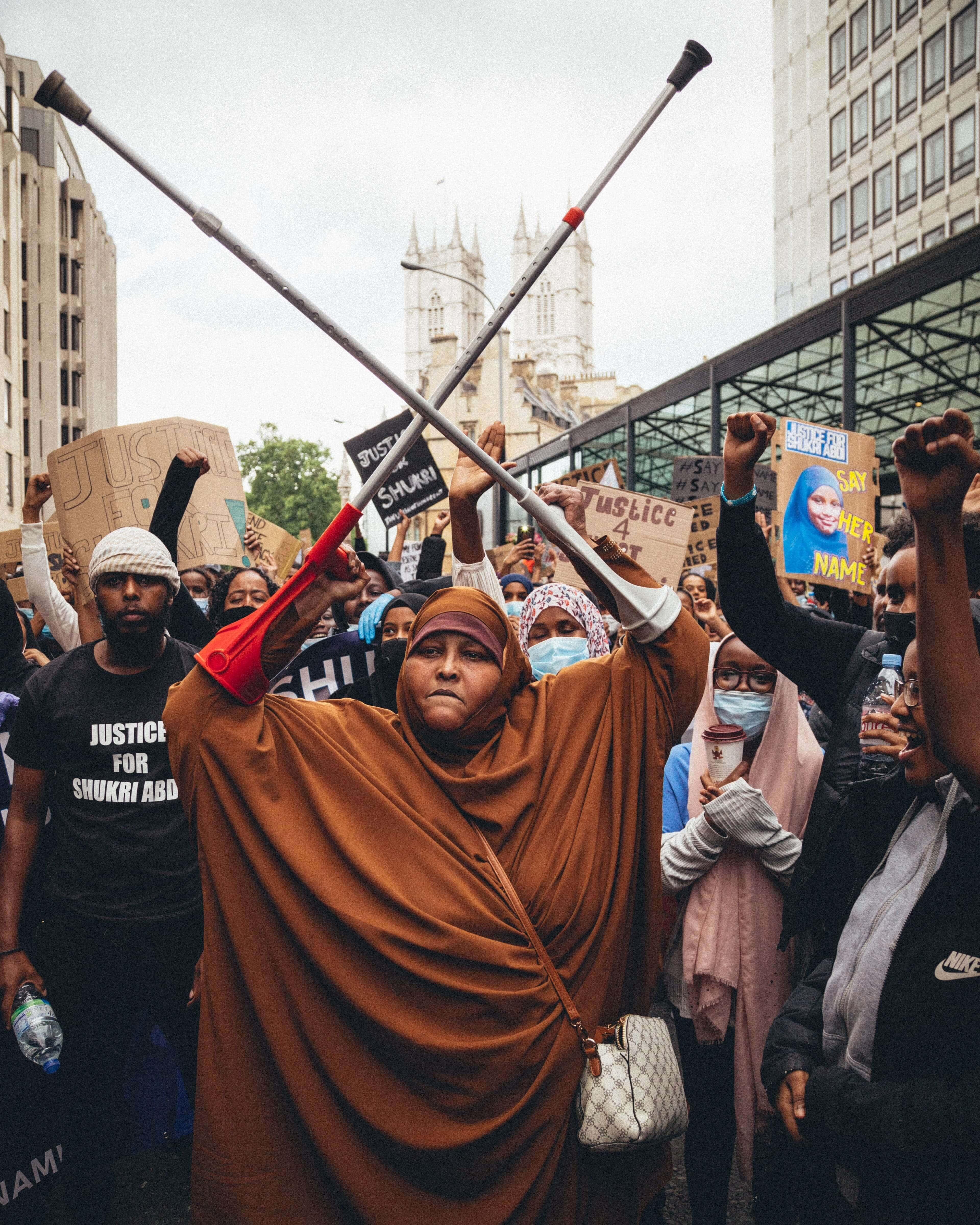
So, what’s next for you?
This year I really want to focus on going more international and tackling issues beyond London but that still affects us at home. I think as a photojournalist you don’t fully immerse yourself in certain topics as you always have the camera to separate you. Yet, when I was out in Greece I connected massively with the people there whichI think you can tell that in the pictures. I don’t feel that I really finished what I started out there and so I’m keen to head back out and continue the project. You’re never going to take the perfect picture, but I’m happy to spend my life trying.
Watch part one and part two of our live interview with Henri on Instagram now!
Take a look at Henri’s EyeEm Profile and follow him on Instagram or LinkedIn to see more of his incredible images and upcoming projects.

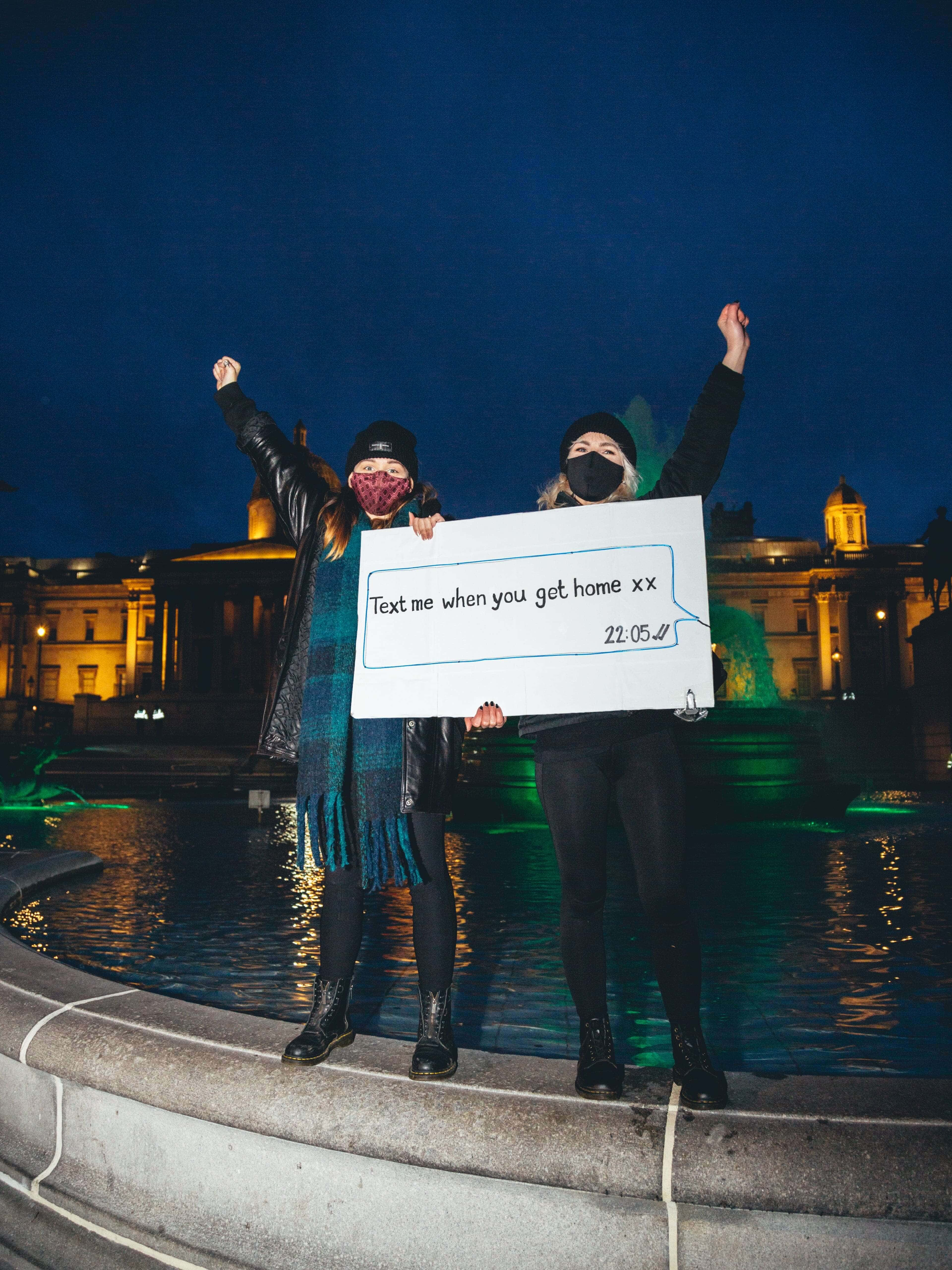
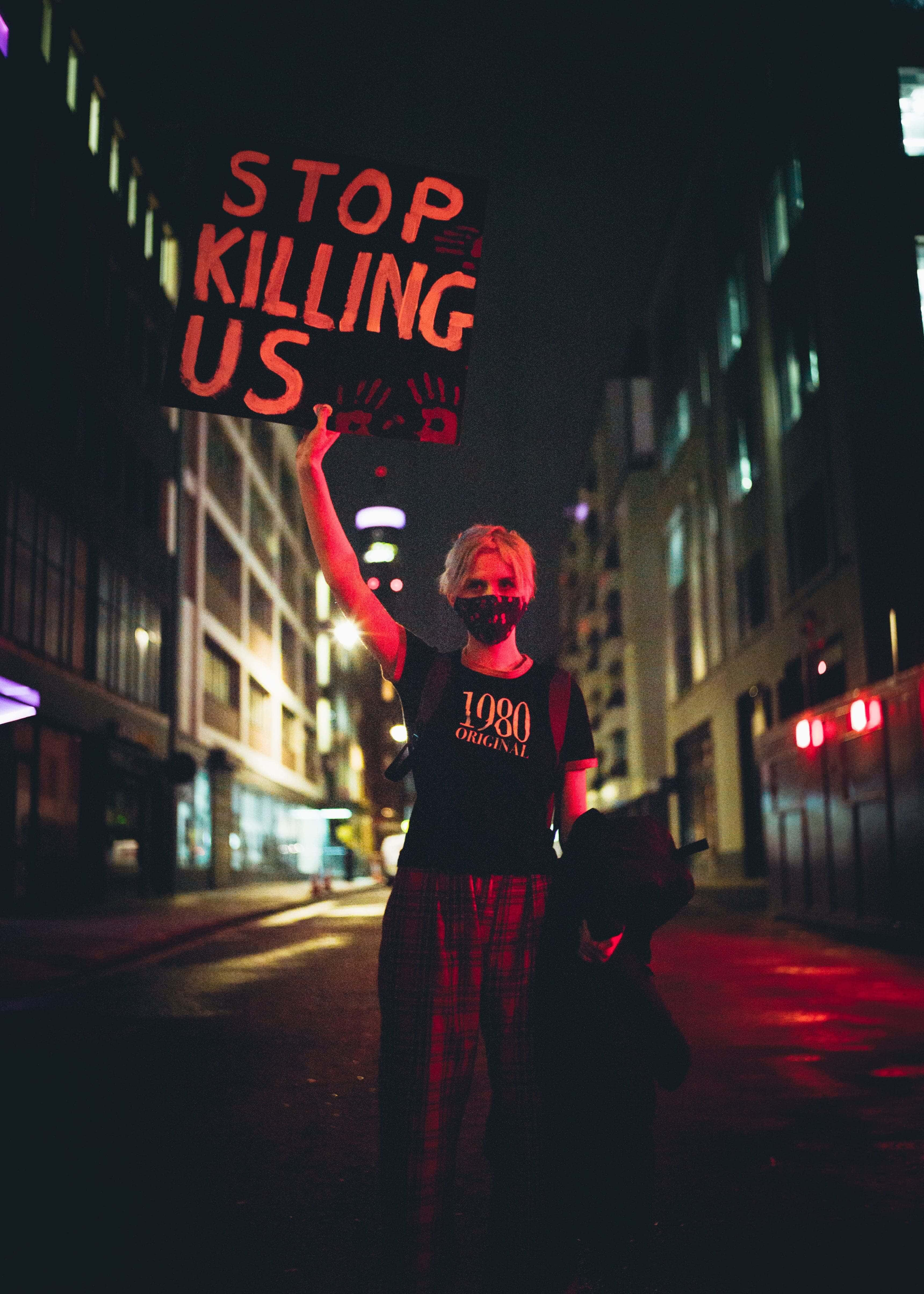
Aiyush Pachnanda Photojournalist
Crowned The EyeEm 2018 Photographer of The Year, Aiyush is a professional photojournalist and portrait photographer that’s always on the move. Published in VICE and The Portrait of Humanity, Aiyush has committed his career to capturing subcultures and contemporary youth culture, where he has caught traction with his coverage on Black Lives Matter, Extinction Rebellion, far right protests, and the UK’s raving culture.
Have there been particular protests that have really kind of occupied your portfolio over the last year or so?
When the lockdown happened a few people started to protest and it really sprung on this whole new season of protesting for me and many other photographers. I got into the habit of going to nearly every single protest that I heard out about to document them. A lot of them were quite interesting to me, like the Black Lives Matter and Extinction Rebellion, which were primarily youth driven and then capturing far right protests. It’s this whole new
How often do you tend to shoot at a protest or a demonstration in London?
It’s really become one or two a week. Often they will fall on a Saturday but can also fall mid-week depending on when the news cycle happens. A few weeks ago there was a protest for Palestine and around 5000 people turned up on that Tuesday, which is insane, but then the following Saturday saw around 100,000 people show up.
How do you manage your own energy when you’re out all day photographing a protest?
I try to lose myself in the crowds. When you’re witnessing the protests, in person you normally get carried with the crowds. I’m sure most photographers will feel the same way, you never want to leave a protest mid-way through because there’s always a feeling in the back of your head that you might miss something. It’s always a double edged sword–do I stay and get the image I want despite feeling exhausted, or do I leave and potentially mis out on something amazing.
Do you feel like your approach changes when you know you’re shooting for a magazine or digital platform?
Yeah, for sure. My approach will be different because the people I’m photographing will react differently to you when you tell them who you’re working for. Let’s say I’m shooting for VICE. They have a really strong target audience and so when I tell people I’m photographing for VICE they are immediately more open but I know for a fact they wouldn’t be the same if I told them I was shooting for a newspaper. However, if I stay neutral and try to stay in the shadows, and if people ask me I’ll tell them, but often I’ll already have what I want by then.
When it comes to making sure that you’re equipped to blend in, how do you prepare for a day shooting a protest?
A big camera may make people feel like their safety is in jeopardy, so you have to realize how your cameras are going to affect people. I shoot with a small point and shoot camera, whereas more mainstream press photographers like to be cameras running neck and are often in your face. But if you have a camera with a zoom lens around your neck and you’re calm about it people are going to react calmly to you.
“I’ve been knocked out and pepper sprayed by police, and you have to carry on and push yourself forward.”
Can you describe a moment that you really felt affected by or impacted your photography in the past 12 months?
It was at a Black Lives Matter protest in Trafalgar Square when a group of counter protesters came and people were shooting fireworks into the crowds. It was so surreal and sad, but there was that adrenaline that made me feel like I couldn’t go home. I didn’t want to be the person that ran from conflict but instead be someone that sees something happening and feels ready for jumping into the crowd. It’s moments like that when you see the emotions on people’s faces and you want to be ready to communicate with them. In the past year, I’ve been knocked out and pepper sprayed by police, and you have to carry on and push yourself forward.
What would be your advice for any emerging talents out there that are thinking about getting into photojournalism or professional freelance photography?
Never leave the house without a camera. I’m pretty sure I was saying this back in 2018 too, but I always have one of my cameras on me. Besides that if you see something you’d like, start photographing everything around that. Start photographing your local sports team or fashion brands and build up from there. Also, do your research. It’s easier said than done but find people that work with brands that you want to work for and then find who they work with. It sounds like being a spy, but that’s how it is.
“If it’s powerful to you, it’s going to be powerful to someone else”
You won The EyeEm Photographer of The Year back in 2018 and two of your images have been selected for this year’s Portrait of Humanity shortlist by the British Journal of Photography! For you, what makes an award-winning photograph?
An award-winning image is something that is current and really makes you remember a moment in time. Especially now, if something goes very viral. From the BLM protests in America, one picture that really stands out to me is the man running past in the burning house with the upside down American flag. I’m sure most people have seen that image. Or in the UK, the image of the EDL member being carried by a black protester. It’s those images that really stick out to me as award-winning images because you can see this was taken at a certain point of time. It should be something that doesn’t need a lot of explaining and it’s very timeless.
You can look at those images in years to come and know why they were there and what those pictures are representing. It’s the same case with my images that ended up in the Portrait of Humanity shortlist. When taking portraits you can end up with so many images, and to whittle them down you have to ask yourself, what represents humanity in 2021? If it’s an empty road in Peckham with a guy doing wheelies on his bike which is pretty cool because Peckham is never empty. Or if it’s an Extinction Rebellion protester glueing her hands to the ground in the middle of Parliament Square. It’s something you have to judge. If it’s powerful to you, it’s going to be powerful to someone else.
Talking of projects, can you tell us what your project Rave to The Grave is all about?
So I was studying photojournalism and I got a call from my mom where she told me to make sure you get a job. Eventually I found a promoter that needed a photographer for his event night. So I went to the event night and it was a drum and bass event, I had no idea what it was and I kind of fell in love with it instantly. One event led to me photographing three events a week by the end of it. It was that progression of so many events in such a small city that I made a book dedicated to the Cardiff drum and bass nightlife.
Squeezing through a crowd of 180,000 is tough but I understand how crowds move with ravers and it’s the same way that everyone moves at protests. Everyone moves to the front of a rave because that’s where the light is. Everyone moves to the front of a protest because that’s where the speakers are.
What was the process of creating your first book?
It really came about during the first lockdown here in the UK where no one had any idea of how long everything was going to be shut. I was sitting on thousands and thousands of pictures of people enjoying themselves and I was looking back thinking of things I would do to be back there. I felt that if I could put this together, I could create this nostalgic feeling again and give new hope to people.
What do you want to see submitted to this year’s awards category The Storyteller?
I want to see something that’s current and real. Someone that has built a small body of work that reflects this new season of protesting or what they’ve done during lockdown. Because it shows the empathy that the photographer has more than anything. That’s what we need going forward–that emotion, empathy, and sense of care.
What are you working on this year?
I have stuff planned for when clubs open. It’s a project that I’ve been wanting to do for months, but looking into the relationship between ravers and protesters. I’m trying to keep track of what I’ve taken in raves, and almost match to photos I’ve taken at protests.
The Storyteller awards category also includes travel photography this year. You spent some time photographing in India, what was that like?
People see a camera and they’re watching you before you see them. It’s again about a mutual connection, if they see a camera they will understand why you’re there. A lot of people were willing to help me and tell me where to go to help me take pictures. Again, if you show that you’re interested in them, they’ll be interested in you.
Watch the full live interview with Aiyush on Instagram now!
Check out Aiyush’s EyeEm profile and make sure you follow him on Instagram and LinkedIn to stay updated with his latest projects.
Don’t forget to enter your photos to The EyeEm Awards 2021 to win incredible prizes, get exhibited, and published.
Are you a brand looking to commission incredible emerging photographers like Henri and Aiyush? Talk to our team and we can connect you with visual storytellers located around the globe.
